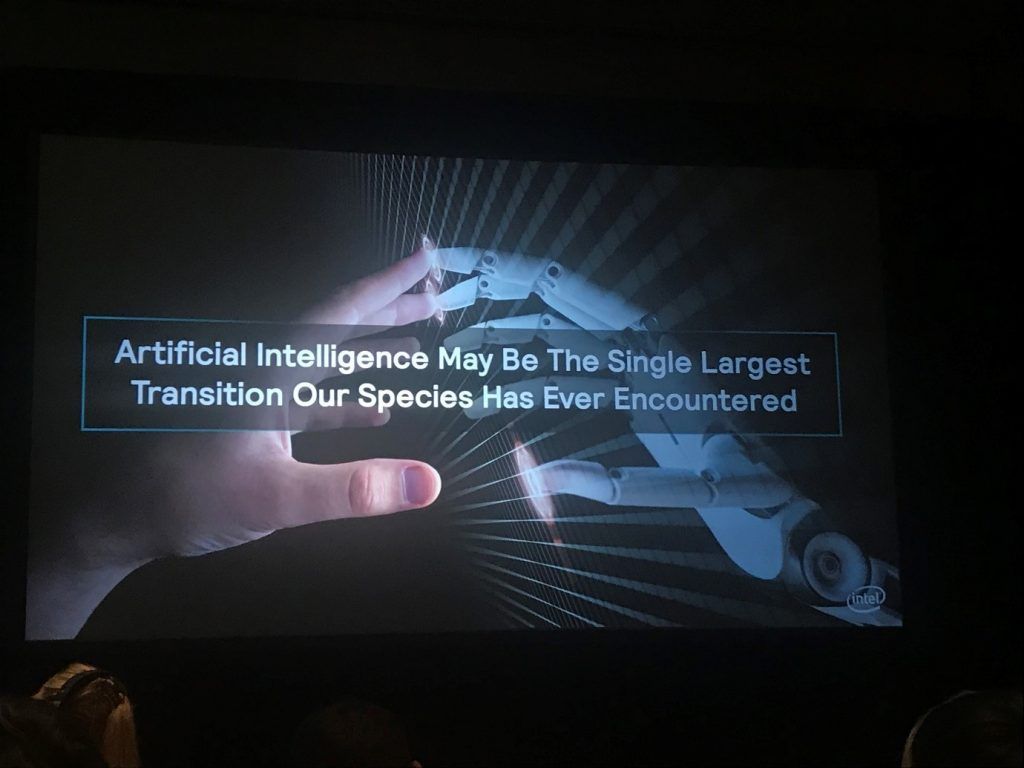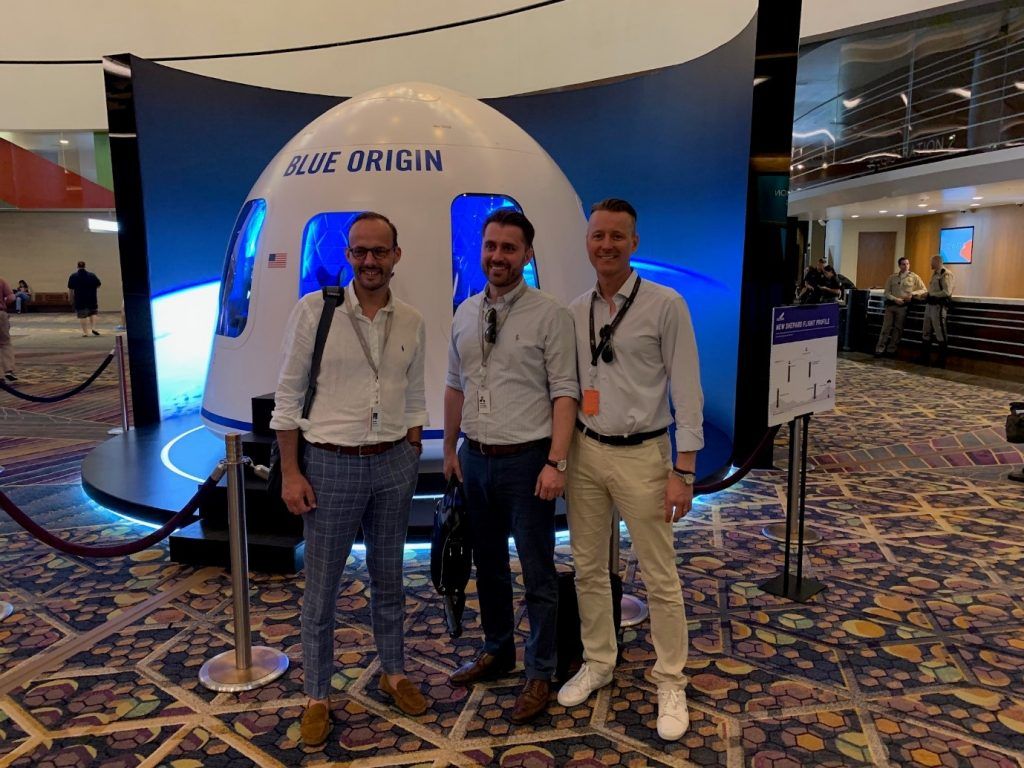Highlights from re:MARS, Global AI & ML Conference
To keep updated on the latest technology and society trends, we have visited many recognized conferences in recent years. In May, we wanted something that really challenged our thinking. We chose the newly established Amazon re:MARS, a giant that knows how to rule things with focus on AI & ML.
Re:MARS is a new conference in Las Vegas hosted by Amazon’s CEO Jeff Bezos. The conference has four focus areas: Machine Learning, Automation, Robotics and Space. These are areas that in many different ways will affect our way of living, and they are closely integrated with each other. With only 2,500 guests, it is much smaller conference than for example re:Invent.
HOW TO MAKE NEW TECHNOLOGIES ACCESSIBLE FOR EVERYONE?
The purpose of the conference was to present new technologies and the business opportunities that come with it, whether you are a big Fortune 100 company or a small start-up. One of the main issues that were discussed was how to make high-end technologies within AI, ML and automation accessible and comprehensive for the everyone. For example, creating AI solutions must not require large development investments and the potential must be clearly presented for groups with strong business focus e.g. management and boards.
What did we learn at re:MARS? Let me share some of my reflections and insights, and I will use the word “MARS” as a structure.
M: MACHINE LEARNING AND VOICE ASSISTANCE
Machine learning was part of many discussions, but what really caught my attention is the fast development of voice assistance. The more users, the higher improvement pace, which means that we will see much more of this in the coming years.

Machine learning was part of many discussions, but what really caught my attention is the fast development of voice assistance. The more users, the higher improvement pace, which means that we will see much more of this in the coming years.
Amazon’s service Alexa Conversation is a step to achieve a more natural dialogue with the user. Alexa can combine several different skills such as understanding that if I am going to the cinema, I might also be interested in finding a good restaurant nearby and reminding me of booking a taxi home. The ability to combine different skills opens for a more dynamic and natural dialogue.
Today the voice assistance services are transaction based, which requires clear commands to make Alexa understand what you want; for example, “Alexa, what will the weather be like in Malmö today?”. With a more natural dialogue, I could just ask “Alexa, what clothes do you recommend me to wear today?”. Alexa will then combine the information from your calendar with the weather forecast and give you a good recommendation.
A: AUTOMATION AND DRONES
Within automation it was Amazon’s service Prime Air Delivery with drones that stole the show. According to Amazon, they will start delivering packages directly to their customers within a couple of months. A drone picks up the package at an Amazon’s pick-up point, and deliver it to the customer’s pick-up point, which could be in their garden!
When launching the new service, Amazon also launched a new drone that will be able to lift, and land vertically, but also fly horizontally in an economic manner so that the reach can be more satisfying. The drone is developed based on the same security requirements as aircrafts, because that is what the customers expect from Amazon.
It will be very interesting to follow the development of drones and I think we will see new policies and regulations, regarding for example security.
R: ROBOTICS
Robotics is a kind of automation and, based on Boston Dynamics’ presentation at re:MARS, there are three types of robots:
First out are the Purpose-built robots. Those are built for a specific use, for example to move a package from one place to another. This kind of robot is rather easy to construct, and it has high certainty and performance. These robots are already competing with human beings due to high efficiency. Most of us do not consider this as a problem though, as the tasks it performs are often both heavy and dangerous.
The second type is the General-purpose robots, that are supposed to grab whatever they have in front of them. Those robots are much more complicated to build and require many sources of information, i.e. sensors and cameras. Human beings have the skills to see, feel and understand and in that way, we can easily adjust how to grab and lift things.

Ken Goldberg at UC Berkely gave an interesting and fun presentation of this challenge in his key note. The video is not from re:MARS, but the message is the same. https://youtu.be/0y4NC358hN0
As human beings we have a sizable head start, just look at this video. https://youtu.be/XAoG6l2_Pqc
The third type is the R&D robots, that can be compared to Formula 1 cars and are not supposed to reach the mass market. Their purpose is to serve as objects for research and development. An exiting prototype was shown at re:MARS: https://youtu.be/MjHE5zyWs6Y
S: SPACE AND NEW COLONIZATION

Jeff Bezon has invested heavily in the colonization of space, where the moon is his first goal. His idea is visualized in the project Blue Origin. According to Amazon, colonizing of space will save the planet because we can move the dirty industries to space and keep the most important industries on earth. The project Blue Origin will for sure push the limits of technology.
TOP THREE TAKE AWAYS:
- Make technology and software accessible and comprehensive for everyone to stimulate development and applications.
- Make sure you know what areas in your business that will not be changed. Those areas are probably the ones that your customers ask for. According to Jeff Bezon that is as important as knowing about which areas that must be changed.
- Build the right team! You need “dreamers” as much as “builders” to succeed.
FOOD FOR THOUGHTS!
Last but not least, Kate Darling’s key note was very fascinating. She talked about how we interact with technology, for example how we feel sorry for robots that die in a war or if our robot vacuum cleaner is stuck in a corner. Why do we react like that?
Previous post:
Reeinvent Builds Ework’s New Digital PlatformNext post:
New Stylish Office Space in Sarajevo